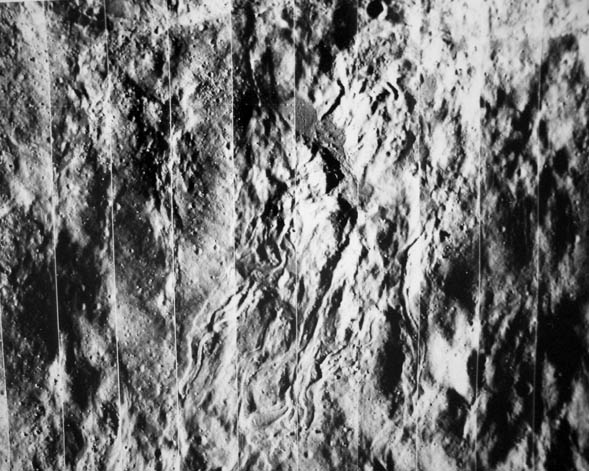March 16, 2016
Snaky Rivers
Originally published May 23, 2005
Image Credit: Lunar Orbiter V LOV-H201 |
|
Snaky Rivers The vertical strips immediately tell the historian of lunar imaging that this is a Lunar Orbiter photo. But the feature itself is difficult to identify because it is small - each vertical framelet is only about 550 m wide. This Lunar Orbiter V frame (from a print I have carried around for 35 years!) reveals narrow flows that extend 2 to 3 kilometers from near the top of the image to the bottom. The flow features occur on the northern rim of Aristarchus and were once claimed to be lava flows, and thus proof that lunar craters were volcanoes. That interpretation has not survived careful scrutiny of the photo, for the flows dont have source craters or fissures. One flow seems to come from the small dark pond near the top, but most simply start - like they were dropped from heaven. And that is approximately true! The flows are made of target rocks that were melted by the energy of the impact that formed Aristarchus, and the melt was ejected into the sky . The materials that went straight up came down and splatted onto the crater. Stuff that landed on the floor collected to make a lake of molten rock, and globs of melt that hit the steep crater rim splashed and flowed downhill. Notice the levees on the sides of the flows, and that at the downslope end (the bottom of the image), the lobate flow fronts mark where melt emptied from the channels. These do look like lava channels and flows, but because of the lack of source vents and pyroclastic deposits we believe that the flowing fluid was impact melt, not volcanic lavas! And the gray flat area is a small impact melt pond that collected in a depression. Related Links: Yesterday's LPOD: Domeland Tomorrow's LPOD: Grand Central Station |
|
Author & Editor: |
COMMENTS?
Register, Log in, and join in the comments.




